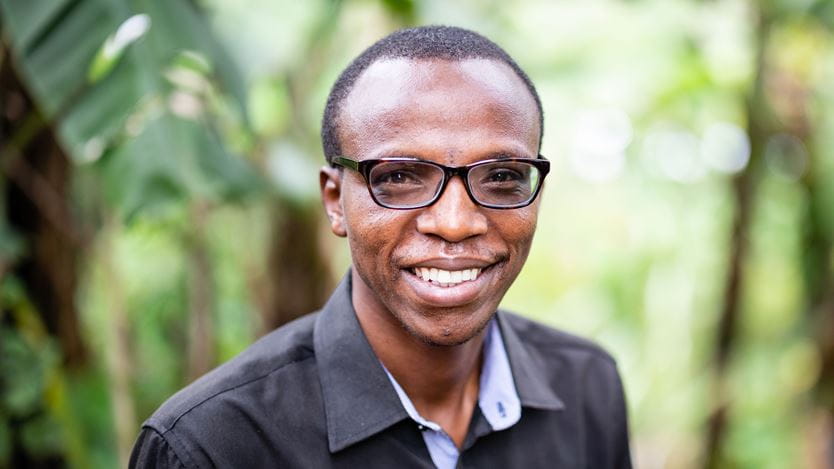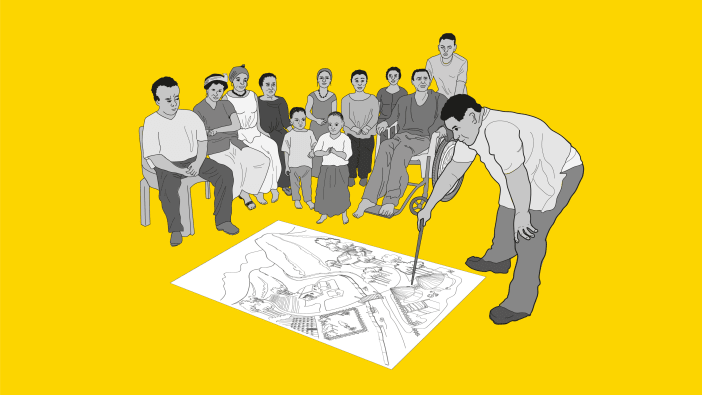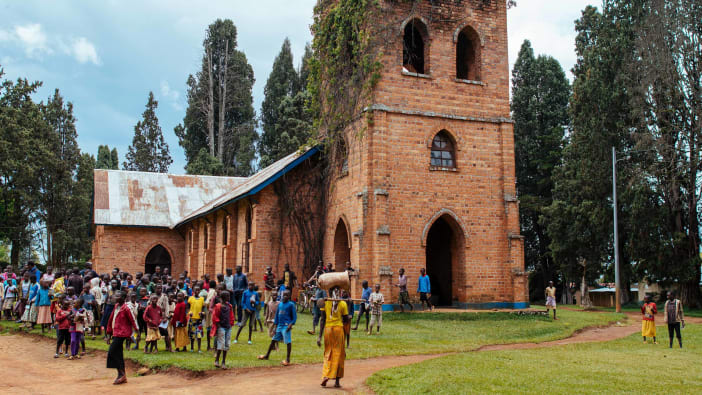When we at Tearfund talk about the kind of change we want to see in the world, we often quote Jesus: when he said ‘I have come to bring life in all its fullness.’ This abundant life is offered to people of all cultures and backgrounds, and the primary way that Tearfund seeks to bring this about is through church and community transformation.
We’ve developed a diagram to explain how this transformation occurs. Let’s strip it right back to see how it works. We start with an important question:
Why is transformation necessary?
At the very core of our mission is our relationship with God, as the One who created us whole, complete, and lacking nothing. When God created, everything was whole:
- our relationship with Him,
- our relationship with ourselves, as individuals made in God’s image,
- our relationship with others,
- and our relationship with the rest of creation.
But when Adam and Eve disobeyed God, those relationships broke.
However God didn't give up on people or the world; he made it possible for those broken relationships to be restored to ‘life in all its fullness’ through Jesus. So, we see these four relationships as the heart of church and community transformation: When broken, they’re the root of poverty in all its forms. But when restored, we start to see the transformation we long for, expressed by the church, in communities, and embraced by nations.
So how does transformation happen?
We have found there to be five elements that must be present in a church and community transformation process for it to be effective.
- First, people spend time studying the Bible to catch a vision of God and His mission for people and for the world.
- Then, people reflect on God’s mission and the changes that they must make as individuals and as a church. Without engaging and reflecting personally with the vision, no sustainable transformation can take place.
- Churches and communities are equipped with practical tools that help them to engage with communities, identify assets, prioritise, plan and respond to needs.
- Churches and communities act together in tangible ways to restore broken relationships. If no one joins in with God to actually do something there will be no transformation.
- And as they act, the church and community learn what is most effective at bringing change, and adapt how they work to see even greater transformation.
Depending on the local context, each phase can be short or long. In some places they are separate, and in others they overlap or are revisited– but every church that has fully embraced and is operating with an integral mission mindset demonstrates most of them.
Okay, so how is transformation measured?
Tearfund developed the ‘Light Wheel’ as a framework for understanding an abundant life or holistic transformation. It identifies nine areas of life, or aspects of wellbeing, that together represent restored relationships, where individuals experience ‘fullness of life’.
‘Living faith’ and the yellow lines in our diagram emphasise the importance of every area of life being impacted by restored relationship with God, specifically measuring how they are growing in an active, life-impacting living faith. The other eight aspects are grouped by how they connect to a restored relationship with self, with others, and with the rest of creation.
Finally, let’s ask how is transformation scaled up?
Within our work there is a recognition that change must start with the individual; with me, you and our families. That change is then worked out in the body of Christ – the church – that aligns itself daily with the mission God has given. The church draws alongside the wider community to bring positive change. And, in time, that change leads to greater change at a national level, or even across borders into other nations. The arrows pointing outward and circles in increasing colour shades in our diagram represent these levels of transformation.
So let’s recap.
- Transformation is necessary because relationships in our world are broken and God's love compels Him and His Church to see those relationships restored through Jesus.
- Transformation happens as churches understand God's desire for people to have abundant life and as the church engages with the community to embed the five elements of Vision, Reflect, Equip, Act and Learn.
- The Light Wheel framework helps a church and community verify if transformation is occurring across the nine areas of wellbeing.
- And transformation reaches new levels as individuals, churches and communities expand their vision of a God who does 'abundantly more than we can ask or imagine'.









